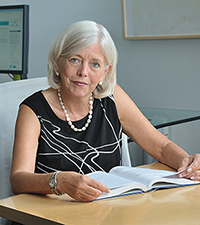
Josephine P. Briggs, M.D.
Director's Page
Josephine P. Briggs, M.D.
Ancient Practice Meets Modern Science
We often hear the rationale for why people turn to a particular complementary or alternative practice is that the approach has been used for thousands of years. However, years of practice do not substitute for rigorous science and evidence-based medicine. Yet the two are not mutually exclusive.
Recently, The Lasker Foundation recognized the convergence of an ancient tradition with modern, rigorous research to develop an extremely important drug therapy that has saved millions of lives. Dr. Tu Youyou of the China Academy of Chinese Medical Sciences in Beijing was awarded the 2011 Lasker-DeBakey Clinical Medical Research Award. This very prestigious recognition is made to scientists, physicians, and public servants who have made major advances in the understanding, diagnosis, treatment, cure, and prevention of human disease.
Dr. Tu developed an arteminisinin-based drug combination that is now the standard regimen for malaria. As described by The Lasker Foundation, “Tu led a team that transformed an ancient Chinese healing method into the most powerful antimalarial medicine currently available.” The journey to develop this vitally important therapy is fascinating, and I urge you to visit The Lasker Foundation’s award description to read about it.
The story of arteminisinin illustrates that promise does exist within some ancient remedies. However, it also requires a deep commitment and dedication to meticulously exploring the science behind the traditions to translate that promise into therapy.
Research in natural products is a key area of focus in our latest strategic plan. On October 14, we will further explore the challenges and opportunities of natural products research at our Advisory Council meeting. Leaders in this field of research will present on product screening, methodology, and good botanical practices. It promises to be a very engaging and enlightening discussion that can further inform our research agenda.
Dr. Tu’s work reminds us that we must not ignore the promise of natural products and ancient practices. As The Lasker Foundation notes, “By applying modern techniques and rigor to a heritage provided by 5000 years of Chinese traditional practitioners, she has delivered its riches into the 21st century.”
* Note: PDF files require a viewer such as the free Adobe Reader.
